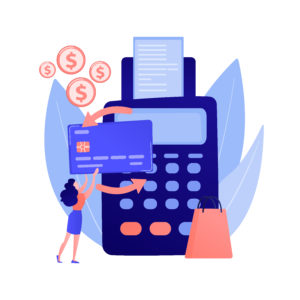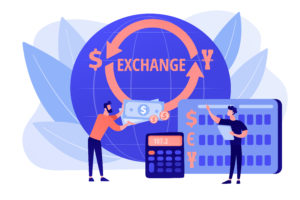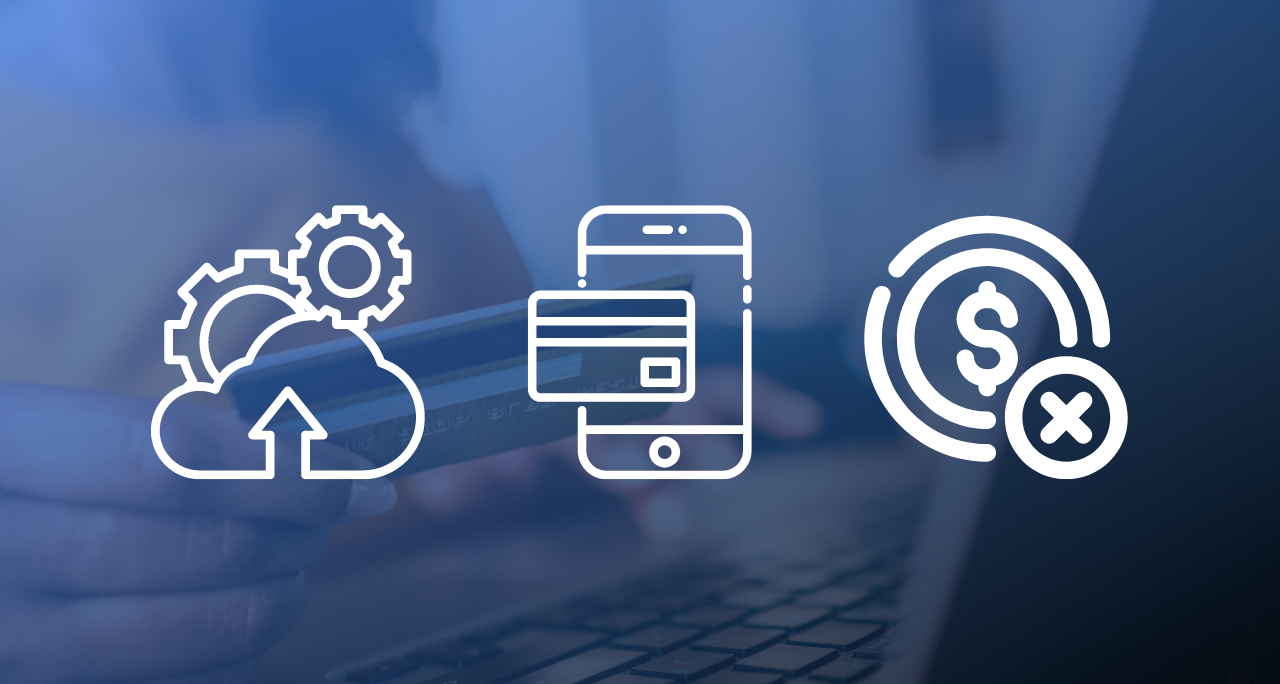Customers gain several benefits from Software as a service (SaaS), so it is no wonder that the market continues to expand. In fact, it is estimated that the industry will continue to grow by 18% each year. This growth means the potential to increase revenue, but it also means more competition for merchants in the space. In order to reap the rewards of the growing industry you need to make sure you are ready to compete.
The rate of success with which your customers’ payments go through should be a top concern for companies selling subscriptions, as recurring revenue is the lifeblood of SaaS businesses, and payment failures generate churn which negatively impacts company revenue. There are several ways payments can fail, and card-not-present transactions are more prone to failing versus other payment methods.
Reasons online payments fail
A sales pipeline can help you predict how much incoming revenue you will have; however, you will still need to account for payment failure. You will need to watch out for the following, which are some of the most common causes of payment failure, so you can create more accurate predictions.
Lack of client notification
Subscriptions are great because they allow the client to obtain their services without having to manage a payment every month if they’ve set up auto-renewal options. This frees up users’ time and allows them to operate smoothly. Unfortunately, they may accidentally end their subscription because they are unaware of any issues that may interrupt their payment plan, like an expired card or insufficient funds.
Poor or absent communication from you and your business will lead to higher rates of involuntary churn. Notifications, like a payment due soon message, are one way to communicate and notify your customers of any upcoming transactions , thus giving them time to prepare for the next charge.
This form of communication may also be a compliance requirement in certain cases. In some areas or in the context of some payment brands, you, as a merchant, are required to clearly communicate with your customer when a subscription is going to be renewed.
Not using dunning management/ the right dunning setup
Missing or ineffective dunning will lead to SaaS payment failure. In particular, it is paramount to have automatic retrial because sometimes payments fail. A lot of the time, a retrial will lead to a successful transaction. Unfortunately, if this feature is absent; then, you will miss out on a sale and the consumer will have lost access to your services. This negatively impacts your rapport with the client and forecasted revenues, but the situation can be avoided with the use of automatic retrial. Plus, it will save you from having to retry all failed payments manually.
Global merchants, activating in multiple geographies, need to pay special attention to how they handle their dunning efforts. To ensure a positive customer experience, even in cases when a failed payment is being communicated, merchants should localize their dunning notifications, ensuring the language and transaction details are localized in the shopper’s language and currency. Using multi-language dunning capabilities goes a long way in streamlining this process and ensuring more due revenue is collected from each market.

Wrong/inaccurate card details
Incorrect card details like billing addresses or card numbers will lead to payment failure when trying a subscription renewal charge. Expired cards will also cause transactions to be declined. Sometimes consumers are unaware of these concerns, but merchants who work with payment providers who employ revenue recovery tools like account updaters and expired card handlers will help keep these details accurate without the need for client action. In addition, the use of network tokenization – the exchange of sensitive cardholder data like the PAN, with non-sensitive placeholder tokens, done by card scheme networks – can also help reduce declines. Since the card networks are the ones who issue the tokens, card details can be automatically updated by card schemes themselves, whenever changes happen.
The bank perceives the transaction as a fraudulent one
Fraud is a major concern for businesses, banks, and consumers. Many banks implement safeguards into place to protect themselves and their account holders, and as a result there are many triggers that can cause a bank to flag a transaction. When financial institutions suspect fraud, they typically decline the payment.
Mismatched information is one of the triggers that can prevent transaction completion. You can reduce this risk by sharing as much transaction data with the bank as possible, and by working with a payment provider that has good authorization rates.
In European countries where the Payment Service Directive 2 is in effect, not sharing sufficient information with the bank can also lead to situations where the user is prompted with a challenge flow (an extra step to authenticate) during the checkout, even when the transaction may have qualified for an exemption.
Manually prorating (or not Prorating) subscriptions at sign up
Prorated subscriptions allow consumers to only pay for the amount of time they used the subscription. Manually prorating is a detail oriented and time-consuming process. Sometimes, you and your team may overlook certain accounts and transactions.
Typically, these are missed when a customer signs-up in the middle of a billing period or when they upgrade to a higher plan. These mistakes can add up to significant losses. What’s worse, is not prorating at all. Those who do not prorate miss out on all payments from new and upgrading consumers. Thankfully, this process can be automated which makes for more thorough and accurate book-keeping while freeing up time for you and your team.
Currency conversion issues
Fraud can be triggered by currency conversion which leads to failed payments. Sometimes, transactions from across-borders are deemed suspicious and are declined as a result. Other times, one currency will have a high fluctuation rate which makes it difficult to convert during payment. You can avoid these fraud triggers by selling to customers in their local currency, localizing your checkout with the customer’s local pricing and currency.

Missing compliance rules in place
If you accept card payments then your business is obligated to meet PCI compliance standards. These standards protect you, your business, and your clients. Compliance applies to you as well as any software or services you use to run your business.
One example of such regulations is PSD2, which we nodded towards earlier. If the customer authentication is triggered but not approved, then your business is in for a lost payment. Another example is India’s new subscription rule, which requires that subscriptions over a certain threshold (5,00 Indian Rupees or ~$64 US) should be renewed manually – should renewals for recurring contracts be set to automatic recharge and the subscription payment is over this threshold, then the merchant is in for failed payments.
The only way to stay in full compliance with continuously updating payment regulations in different markets is to work with commerce providers who periodically update their systems and platform with the latest compliance rulings.
Tactics to combat failed payments in SaaS
SaaS payments failure can be frustrating. Luckily, there are several tactics that can be used to address these problems and improve your success rates.
Use dunning management
Dunning management is a key component to decrease subscriber churn, and ensure more payment for recurring services go through. This process involves communicating with subscribers about upcoming fees to ensure payment collection and success. Emails, app notifications, texts, and phone calls are all great ways to interact and reach your customers. In these messages, you should address payment failure or the client’s intention to end their subscription.
Pro-actively notify customers of upcoming charges
Notifications about upcoming charges are a pro-active measure and will help you and your clients manage their subscriptions. Clients should be notified at least once before an upcoming charge, and they should be given ample time to address any concerns there may be. This is especially important for cross-border shoppers because they need to be aware that their country may be out-of-range, so they will need enough time to find a valid payment option.
Use a payment provider that uses payment routing
Intelligent payment routing is crucial for high authorization rates and increasing revenue. Select a provider that will use multiple and local acquirers, so the transaction will be run through the best acquirer. This style of routing can help you decrease the number of declined transactions, whether these declines are payment-network related or fraud-related.
Offer alternative payment methods
Payment options have expanded rapidly in recent years, and consumers will want the ability to choose the option that works best for them. Moreover, some options help prevent involuntary churn. For one, digital wallets do not have expiration dates, and it is expected that in 2025, 43.7% of United States smartphone users will make payments using their digital wallets. Overall, digital wallets offer a more user-friendly, predictable payment experience, that is why their chances for a failed payment are lower than those of card payments.
Local payment methods should also be employed – like iDEAL in Netherlands or the UPI scheme in India – as local customers will be more familiar with these and will know what to expect from the checkout process.
Direct debits draw funds directly from the user’s account and can be used when there are recurring payments. There are several safeguards in place to protect the user which also allows for preauthorization, so there are low-levels of payment failure associated with direct debit payments.

Look for extra functionalities that combat payment failures
The following are some additional tools that can be used to combat payment failures.
- For merchants selling in Europe, a good implementation of Strong Customer Authentication Exemptions from the payment provider is key – New legislation, specifically Payment Services Directive 2 (PSD2), has made eCommerce requirements stricter. Under PSD2, sellers are required to authenticate users through a multi-factor process. Luckily, subscription-based services typically have exemptions for user authentication. The exemption still requires user authentication, but it only needs to happen once when the client first subscribes to the service. Without this exemption, all transactions would need to be authenticated which users may miss and cause lower authorization rates.
- Account Updaters – Out-of-date card details will cause payments to fail. Account updaters work automatically to update card details, like expiration dates. What’s more, these updates do not require your clients to perform any actions; nevertheless, you should have your subscribers double check their information annually, bi-annually, or at time intervals that work best for your business.
- Network Tokenization – Another way to avoid expired cards or out-of-date information is through network tokenization. This process replaces primary account numbers and other details with a unique token. There is no expiration date or need to update card information, so there is little to no risk of payment failure due to inaccurate details.
As a SaaS merchant, you should not limit yourself to only one provider. When you choose an eCommerce provider, opt for one that allows you to process payments through multiple acquirers and has strong failovers and ML processes in place.
Conclusion
The SaaS market is still thriving, and you want to avoid subscriber churn and payment failure. You will need to take a proactive approach and examine your business for any common errors that lead to payment failure. Moreover, it is in your best interest to optimize your pay processing to ensure higher success rates, better customer rapport, and more revenue.
Looking to upgrade your SaaS strategies in order to maximize your revenue and boost your growth? Well, in order to do so, you need to stay up to date with all the trends in the industry. But don’t worry, we’ve got you covered! Check out our eBook to learn insights from the experts on what the upcoming years may have in store for the SaaS industry and actionable tactics that will help you skyrocket your SaaS and Subscription businesses.






